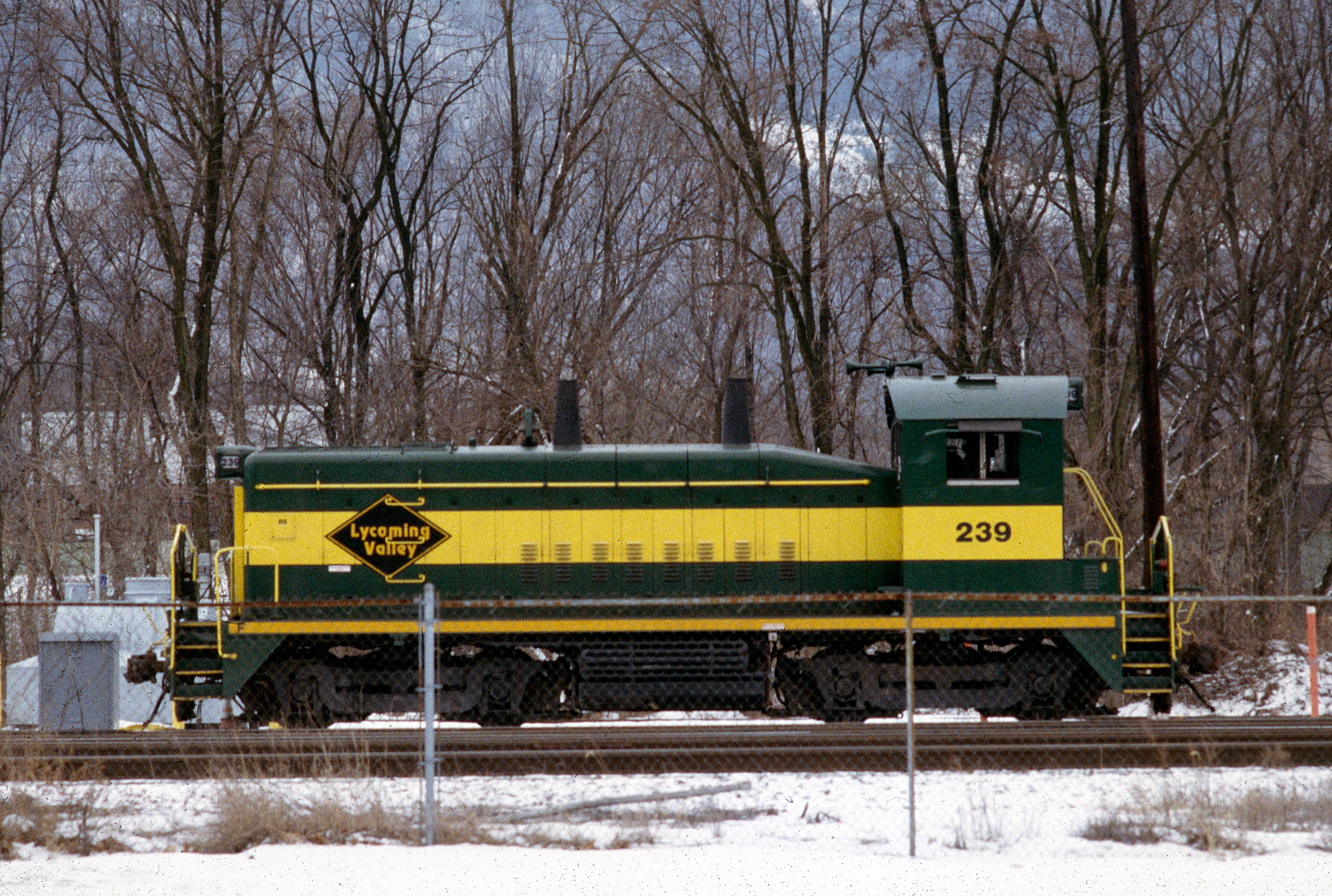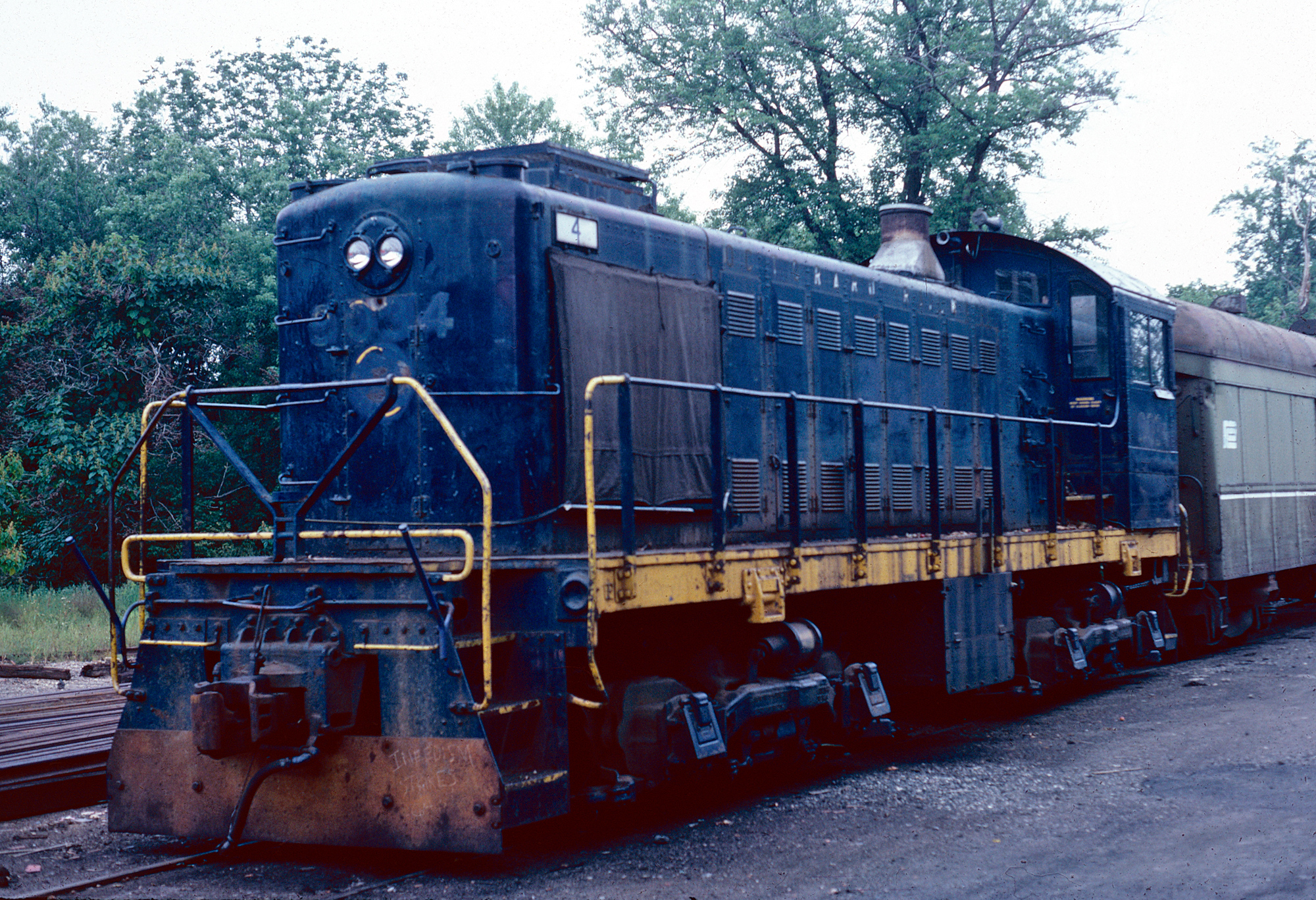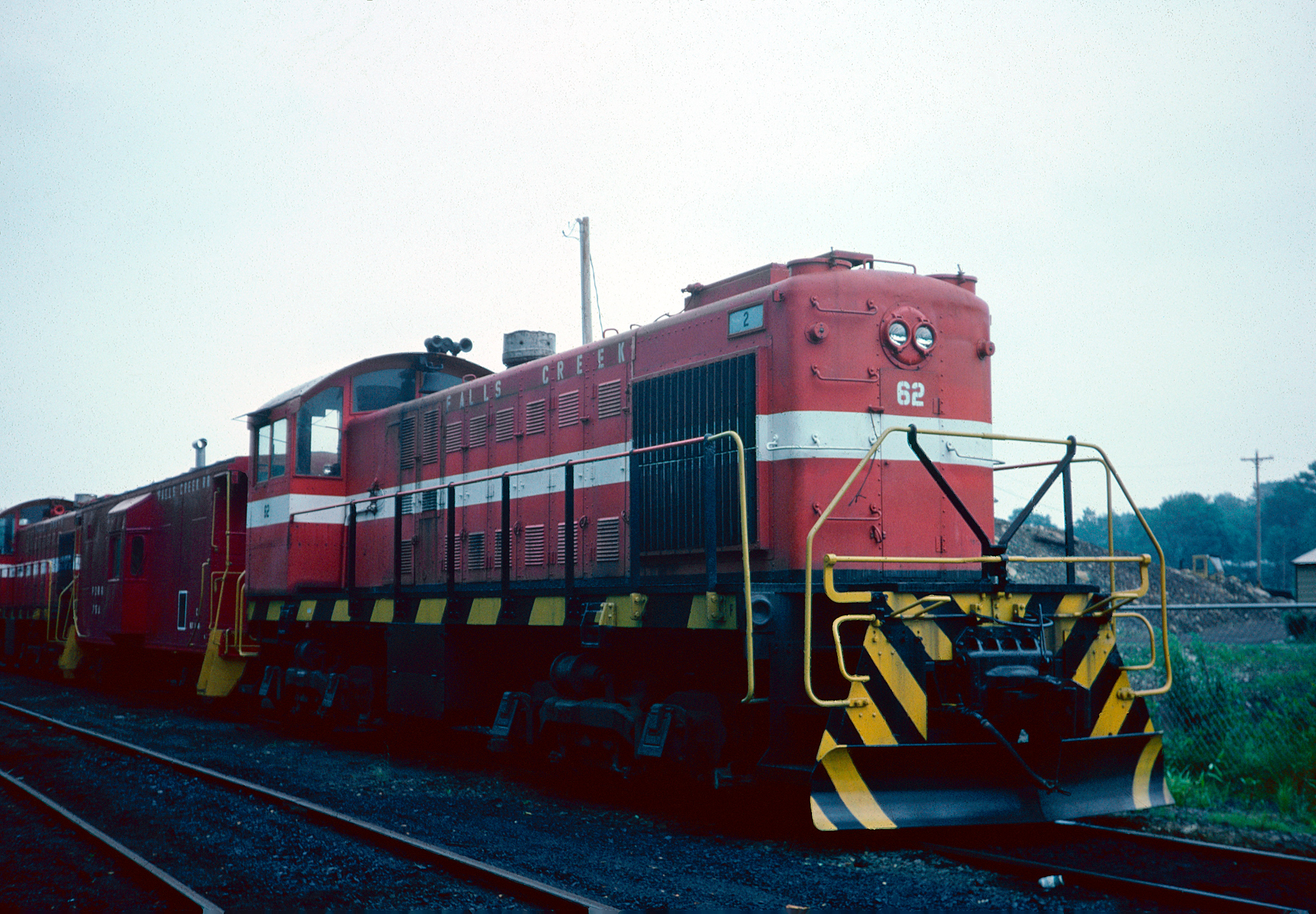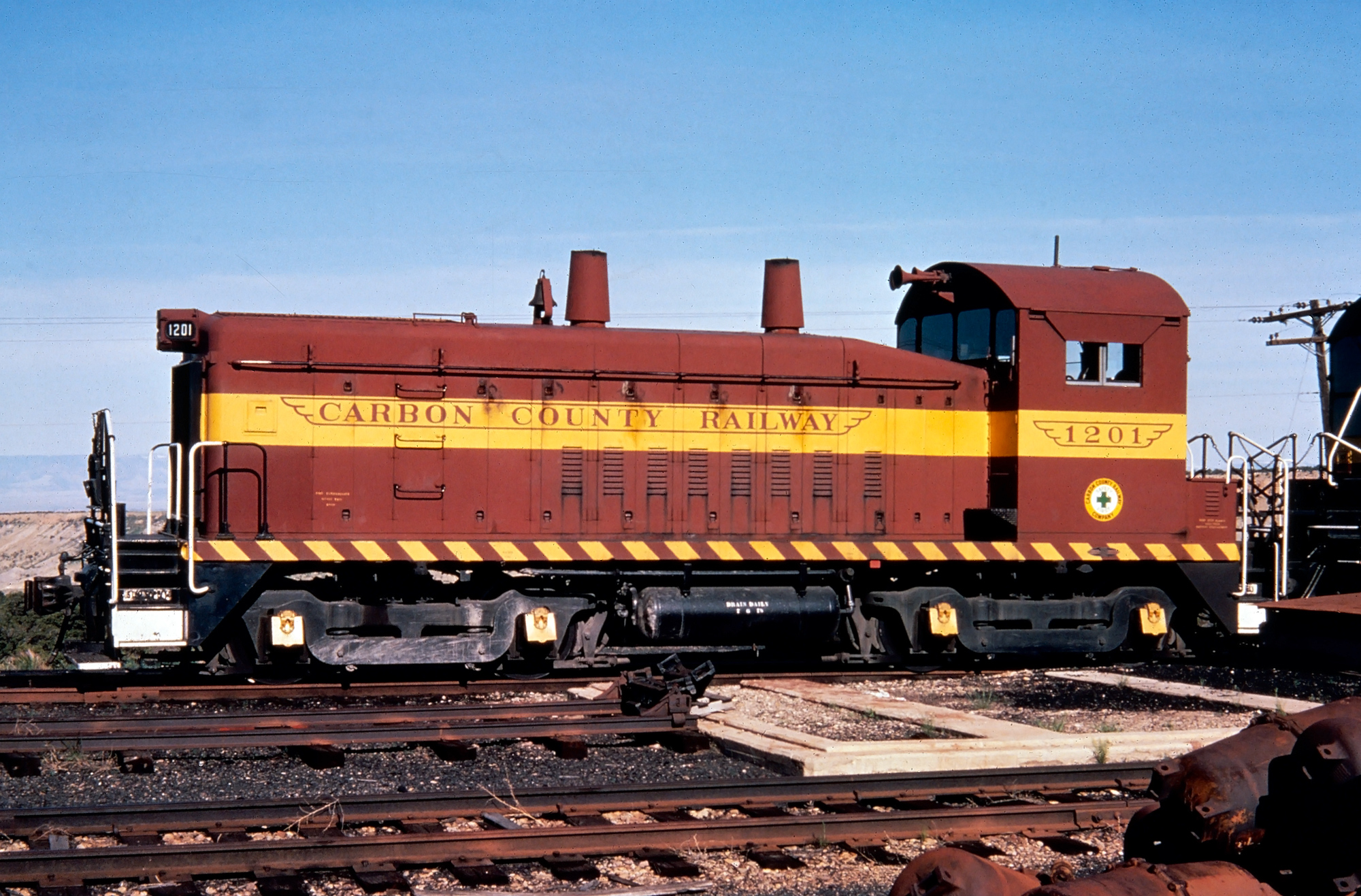Short Line Railroads (Class 3): List, Revenue, Definition
Last revised: February 24, 2025
By: Adam Burns
Short lines, whose designation by the Surface Transportation Board (STB) is a Class III carrier (which includes terminal and switching lines) make up the bulk of today's freight railroads.
According to the STB and American Short Line & Regional Railroad Association (ASLRRA) the 2016 definition of a short line is any earning an annual operating revenue less than $36.633 million.
This figure is adjusted yearly, which factors inflation using the base year of 1991 according to the ASLRRA. Class III's may be the smallest but they offer perhaps the greatest level of interest, hearkening back to an era when single car service was commonplace.
Overview
This practice has been largely abandoned under Class I's which favor lucrative long haul, unit consists.
As a group short lines comprise nearly double the annual revenue, mileage, and employees of their larger counterpart, the regional In addition, many are part of a large conglomerate such as Genesee & Wyoming, Watco, or OmniTRAX.
Photos
 Lycoming Valley SW9 #239 (built as Pittsburg & Shawmut #239) is seen here at Lock Haven, Pennsylvania in March, 2003. American-Rails.com collection.
Lycoming Valley SW9 #239 (built as Pittsburg & Shawmut #239) is seen here at Lock Haven, Pennsylvania in March, 2003. American-Rails.com collection.Definition
The short line offers a good example of how railroading was performed more than a half-century ago.
While the caboose is gone, crew sizes reduced (conductor and engineer), foot-boards outlawed, and less-than-carload business a thing of the past the focus on customer service has remained steadfast.
These small carriers depend greatly upon their customers and you will find none other providing higher quality service than a short line.
A particular carrier may rely on a few precious annual carloads to make ends meet, unable to afford such a loss. In some cases a single customer will generate most, or all, of its yearly business. Such a situation occurred at the Elk River Railroad in West Virginia.
 Octoraro Railway S2 #4 (built as Baltimore & Ohio #490, later renumbered 9034) lays over in Kennett Square, Pennsylvania during August of 1981. This short line operated the former PRR's Octoraro Branch between Chadds Ford, Pennsylvania and the state line near Sylmar, Maryland from 1977-1994. American-Rails.com collection.
Octoraro Railway S2 #4 (built as Baltimore & Ohio #490, later renumbered 9034) lays over in Kennett Square, Pennsylvania during August of 1981. This short line operated the former PRR's Octoraro Branch between Chadds Ford, Pennsylvania and the state line near Sylmar, Maryland from 1977-1994. American-Rails.com collection.Operating on the former Baltimore & Ohio's Coal & Coke Branch, as well as the ex-Buffalo Creek & Gauley south of Gassaway it began operations in the mid-1990's to serve a coal mine.
Unfortunately, within a few years the mine closed and business abruptly stopped. Now, more than a decade later, the Elk River survives largely by storing and repairing cars.
By contrast there are large systems operating several hundred miles that nearly achieving Class II status. These include names like RJ Corman; Iowa Northern; Twin Cities & Western; and Livonia, Avon & Lakeville.
There are also those which have historic connections dating back a century or more like the Indiana Harbor Belt (a Chicago belt line), St. Marys Railroad, Utah Railway, and Ann Arbor (Michigan's reborn survivor). The bottom line is you can find Class III's of all shapes and sizes.
Some railfans have become resentful of Genesee & Wyoming, a conglomerate which has spent the last few decades amassing a wealth of once-independent short lines, including one-time rival RailAmerica.
However, it has been extremely successful; so successful in fact that no railroad under its control has either failed or been sold.
The company began humbly as a small short line incorporated in 1891, the Genesee & Wyoming Valley Railway.
The G&WV opened in 1894 from Retsof to a location known as P&L Junction near Caledonia (14 miles). It was reorganized as the Genesee & Wyoming in 1899.
 Falls Creek Railroad S2 #2/#62 (built as Long Island Rail Road #452), and other equipment, are tied down in Falls Creek, Pennsylvania on July 11, 1982. In 1980, this short line acquired from Conrail the 4.5 miles between Falls Creek and Mcminns Summit, Pennsylvania that remained of the former PRR branch which once linked Falls Creek with Ridgway. Operations were suspended in 1988. The paralleling Baltimore & Ohio line through this area remains active (ex-Buffalo, Rochester & Pittsburgh). American-Rails.com collection.
Falls Creek Railroad S2 #2/#62 (built as Long Island Rail Road #452), and other equipment, are tied down in Falls Creek, Pennsylvania on July 11, 1982. In 1980, this short line acquired from Conrail the 4.5 miles between Falls Creek and Mcminns Summit, Pennsylvania that remained of the former PRR branch which once linked Falls Creek with Ridgway. Operations were suspended in 1988. The paralleling Baltimore & Ohio line through this area remains active (ex-Buffalo, Rochester & Pittsburgh). American-Rails.com collection.The railroad remained unchanged for more than 70 years until new ownership in 1977 formed Genesee & Wyoming Industries, which branched out into the rail car leasing and management business.
In 1986 it picked up its first short line subsidiary when Chessie System sold off much of the old Buffalo, Rochester & Pittsburgh property in western New York and Pennsylvania; renamed under G&W as the Buffalo & Pittsburgh.
Since then the company has expanded prodigiously, acquiring railroads where potential is recognized.
At the present time it operates ten different North American regions (Pacific, Mountain West, Central, Coast, Southern, Midwest, Ohio Valley, Coastal, Northeast, and Canada), boasts a Europe Region, and maintains two operations in Australia ("Genesee & Wyoming Australia" and "Freightliner Australia").
The success of short lines/regionals in the post-1980 era has been unquestioned, preserving many corridors which would have otherwise been abandoned.
This has left analysts and industry experts to conclude that shedding so much infrastructure during the 1970s and 1980s was a severe overreach despite the industry's troubles during that time.
 Carbon County Railway SW9 #1201 lays over at the road's small engine terminal in East Carbon, Utah during the 1970s. This system was organized in 1922 by Utah Coal & Coke/Columbia Steel to run from a connection with the Rio Grande's Sunnyside Branch at East Carbon, Utah to coal mines located at Columbia, 4.8 miles away. During World War II it was extended an additional 6 miles to serve the Geneva Mine to transport coal/coke to the new Geneva steel mill in Geneva, Utah. The Columbia mine closed on May 31, 1967 followed later by the Geneva mine in 1982. The track was later removed in 2008. American-Rails.com collection.
Carbon County Railway SW9 #1201 lays over at the road's small engine terminal in East Carbon, Utah during the 1970s. This system was organized in 1922 by Utah Coal & Coke/Columbia Steel to run from a connection with the Rio Grande's Sunnyside Branch at East Carbon, Utah to coal mines located at Columbia, 4.8 miles away. During World War II it was extended an additional 6 miles to serve the Geneva Mine to transport coal/coke to the new Geneva steel mill in Geneva, Utah. The Columbia mine closed on May 31, 1967 followed later by the Geneva mine in 1982. The track was later removed in 2008. American-Rails.com collection.Locomotives comprise another interesting aspect of the short line phenomenon. If you have an interest in classic designs they abound on these railroads; anything from little switchers like General Electric 44-tonner's and American Locomotive S-1's to Electro-Motive's line of GP7's and SD9's. All of these date to the 1950's or earlier and can still be found working revenue service.
Interestingly, even the Chicago & North Western continued maintaining a fleet of GP7's into the 1990's, a testament to the model's longevity and durability.
In some cases, a short line, for a variety of reasons, actually prefers a particular design or manufacturer's build.
Take, for example, the Livonia, Avon & Lakeville in New York which rosters an all-Alco road-switcher fleet (C425's, C424's, RS3's, RS36's, etc.) or the SMS Rail Lines roster of rare Baldwin units ( VO-660, VO-1000, DS-4-4-660, DS-4-4-1000, DS-4-4-750, S12, and AS616).
Even today, new Class III's continue springing up like the once-dormant, historic Grafton & Upton, in Massachusetts.
At A Glance
9% Local 33% Originated 48% Terminated 10% Bridged |
|
Sources: American Short Line and Regional Railroad Association, Federal Railroad Administration
Facts And Figures
| Railroad Type | Number | Mileage | Employees | Revenue (Billions) |
|---|---|---|---|---|
| Class 1 | 7 | 95,264 | 163,464 | $67.6 |
| Regional (Class 2) | 21 | 10,335 | 5,507 | $1.4 |
| Short Line/Local (Class 3) | 582 | 37,165 | 12,293 | $2.6 |
Source: Federal Railroad Administration's "Summary Of Class II and Class III Railroad Capital Needs And Funding Source" Report (October, 2014)
Conglomerates
Iowa Pacific Holdings (Defunct)
Rio Grande Pacific Corporation
Company List
Toledo, Peoria & Western
RJ Corman Railroad Group
Belt Railway of Chicago
Cedar Rapids & Iowa City
Chicago, South Shore & South Bend
Northeast
B&H Rail Corporation
Beech Mountain Railroad
Belpre Industrial Parkersburg Railroad
Housatonic Railroad
Little Kanawha River Railroad
Livonia, Avon & Lakeville
Maryland Midland Railway
South Branch Valley
West Virginia Central
New Hope Railroad
Southeast
Aberdeen & Rockfish
Aberdeen, Carolina & Western
Apalachicola Northern
Atlanta & St. Andrews Bay
Buckingham Branch
Columbus & Greenville
De Queen & Eastern
Norfolk & Portsmouth Belt Line Railroad
South Carolina Central
Georgia Northeastern
Georgia Southwestern
Pickens Railway
Chesapeake & Albermarle
Lancaster & Chester
Rock Island Rail
Sandersville Railroad
St. Marys Railroad
Midwest
Arkansas-Oklahoma Railroad
Indiana Harbor Belt
Iowa Traction
Peoria & Pekin Union (Tazewell & Peoria)
Lake Superior & Ishpeming
Indiana & Ohio
Minnesota Commercial
Ohio Central
Alton & Southern
Iowa Northern
Illinois & Midland
Sand Springs Railway
Tulsa-Sapulpa Union
Terminal Railroad Association Of St. Louis
Southwest
Black Mesa & Lake Powell
Arizona & California
Fort Worth & Western
Apache Railway
Dallas, Garland & Northeastern
Farmrail
Georgetown Railroad
Copper Basin Railway
Sierra Railroad
Trona Railway
Modesto & Empire Traction
Northwest
Central California Traction Company
Port of Tillamook Bay
Idaho, Northern & Pacific
Eastern Idaho Railroad
Red River Valley & Western
Defunct Lines
Belfast & Moosehead Lake Railroad
Bonhomie & Hattiesburg Southern
Brooklyn Eastern District Terminal
Chicago Central & Pacific Railroad
Copper Range Railroad
Dansville & Mount Morris
Durham & Southern
Erie Mining Company
Erie Western Railway
Frankfort & Cincinnati
Huntingdon and Broad Top Mountain Railroad
Kelley's Creek and Northwestern Railroad
Kentucky & Tennessee Railroad
Lake Erie, Franklin & Clarion
Magma Arizona
McCloud River Railroad
Muskingum Electric
North Louisiana & Gulf
Pittsburg & Shawmut
Quanah, Acme & Pacific, "The Quanah Route"
Rahway Valley
Raritan River Railroad
Reader Railroad
Roscoe, Snyder & Pacific
Southern San Luis Valley Railroad
St. Johnsbury & Lamoille County
Texas-Mexican Railway
Toronto, Hamilton & Buffalo
Virginia Blue Ridge Railway
Wellsville, Addison & Galeton
West Virginia Northern
The short line concept is not new. There have been many famous carriers dating back to the pre-Staggers era such as the bucolic Maryland & Pennsylvania, Colorado's Great Western Railway, fabled Virginian & Truckee, and little Virginia Central.
There were also numerous belt lines and terminal roads (many subsidiaries or larger railroads) such as the Baltimore & Ohio Chicago Terminal, Portland Terminal, Belt Railway of Chicago, Peoria & Pekin Union, and Davenport, Rock Island & North Western.
However, only since the industry's deregulation have their numbers more than doubled. So, if you get the chance be sure and see one in action.
While watching a container train on a Class I zipping across the Heartland is always thrilling, nothing can likewise beat a local line switching a local customer.
If you want to see the human side of railroading, no one does it better than these small lines. To learn more about them please click here to visit the American Short Line and Regional Railroad Association's (ASLRRA) website.
This member organization is similar in nature to the Association of American Railroads but geared towards smaller, non-Class I carriers.
Directory
Alabama
Alaska
Alaska Railroad (reporting mark, ARR): The state's only freight hauler, the historic Alaska Railroad is a Class II, regional, dating back to its founding in 1914, acquiring the Alaska Northern Railroad and tasked with completing the route to Fairbanks.
Today, the ARR connects that point with Seward and Whittier. While there have been initiatives to further extend the system these have never materialized thus far.
The railroad still provides regular passenger schedules along with its extensive freight service. In all, the system currently stretches more than 500 miles including both main and secondary trackage while annual revenues exceed $160 million.
Arizona
Arkansas
California
Colorado
Connecticut
Delaware
Florida
Georgia
Idaho
Illinois
Indiana
Iowa
Kansas
Kentucky
Louisiana
Maine
Maryland
Massachusetts
Michigan
Minnesota
Mississippi
Missouri
Montana
Nebraska
New Hampshire
New Jersey
New Mexico
New York
North Carolina
North Dakota
Dakota, Missouri Valley & Western Railroad (reporting mark, DMVW): This large, privately-owned system operates more than 500 miles of trackage (including trackage rights) in the states of North Dakota, South Dakota, and Montana that was formerly owned by the Soo Line. The road's traffic is largely agriculture and it has been in operation since 1990.
Dakota Northern Railroad (reporting mark, DN): This short line carrier began operation only in 2006 that originally operated 72 miles of trackage in northeastern North Dakota that is formerly Great Northern and part of which is leased by BNSF. Since then, about 18 miles have been abandoned. The road is privately-owned by the KBN Incorporated and Independent Locomotive Service.
Northern Plains Railroad (reporting mark, NPR): This privately-owned, short line railroad is mostly concentrated in North Dakota, leasing nearly 400 miles of track from carriers such as Canadian Pacific and Mohall Central Railroad. The history of its properties traces back to the Soo, GN, and NP. Its traffic consists primarily of agricultural products and it handles about 17,000 carloads annually.
Red River Valley & Western Railroad (reporting mark, RRVW): See Minnesota.
Yellowstone Valley Railroad (reporting mark, YSVR): Another Watco shortline, this railroad operates more than 170 miles of former Great Northern trackage in northeastern Montana, stretching into North Dakota. It began service in late 2005 and handles traffic related to the natural gas industry including natural gas, crude oil, and frac sand.
Ohio
Oklahoma
Oregon
Pennsylvania
Rhode Island
Providence & Worcester Railroad (reporting mark, PW): See Connecticut.
Seaview Railroad (reporting mark, SVTX): This short line is a division of the Seaview Transportation Company. It connects with the Northeast Corridor in West Davisville and serves numerous businesses at the Quonset Business Park in Davisville with the line splitting to reach the waterfront at North Davisville and Quonset Airport.
South Carolina
South Dakota
Tennessee
Texas
Utah
Vermont
Virginia
Washington
West Virginia
Wisconsin
Contents
Recent Articles
-
A North Carolina Christmas Train Ride On The Tweetsie!
Nov 17, 25 11:33 AM
Each year, the Tweetsie Railroad's signature holiday attraction—Tweetsie Christmas—transforms the property into one of the region’s most enchanting winter experiences. -
A New York Christmas Train Ride In Corinth!
Nov 17, 25 10:39 AM
Today, the Saratoga, Corinth & Hudson Railway combines historic equipment, hands-on craftsmanship, and immersive family experiences—including its increasingly popular holiday rides, the Candy Cane Exp… -
A New Mexico Christmas Train Ride In Santa Fe!
Nov 17, 25 09:48 AM
Among the Sky Railway's most popular offerings is a family-friendly Christmas outing, Pablo’s Holiday Express, which turns the historic Lamy Depot into a winter wonderland each holiday season.



